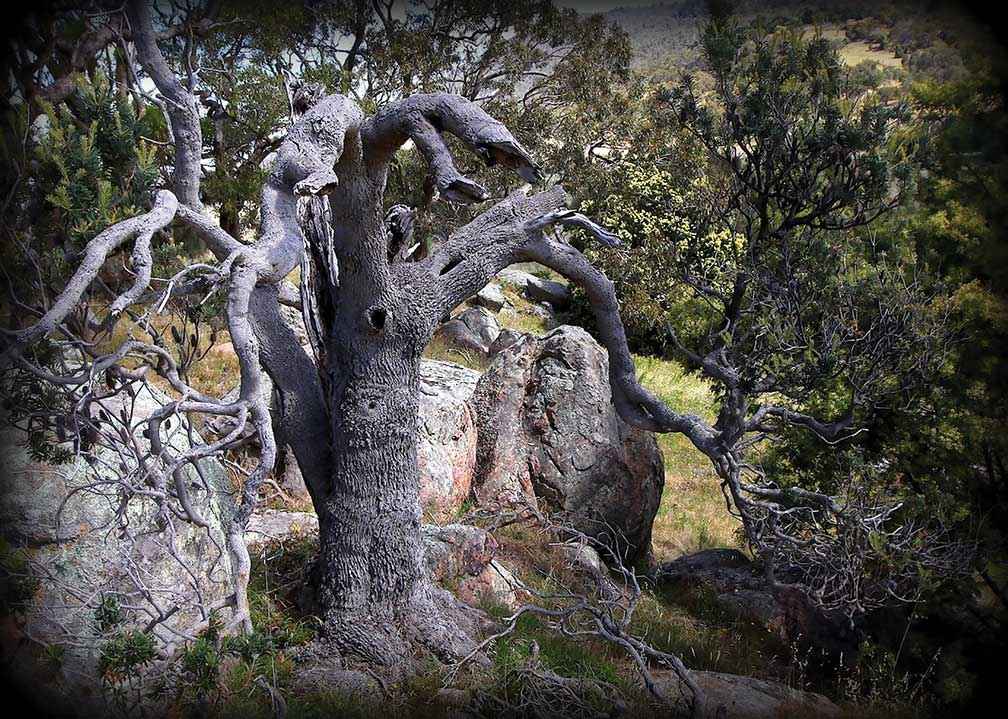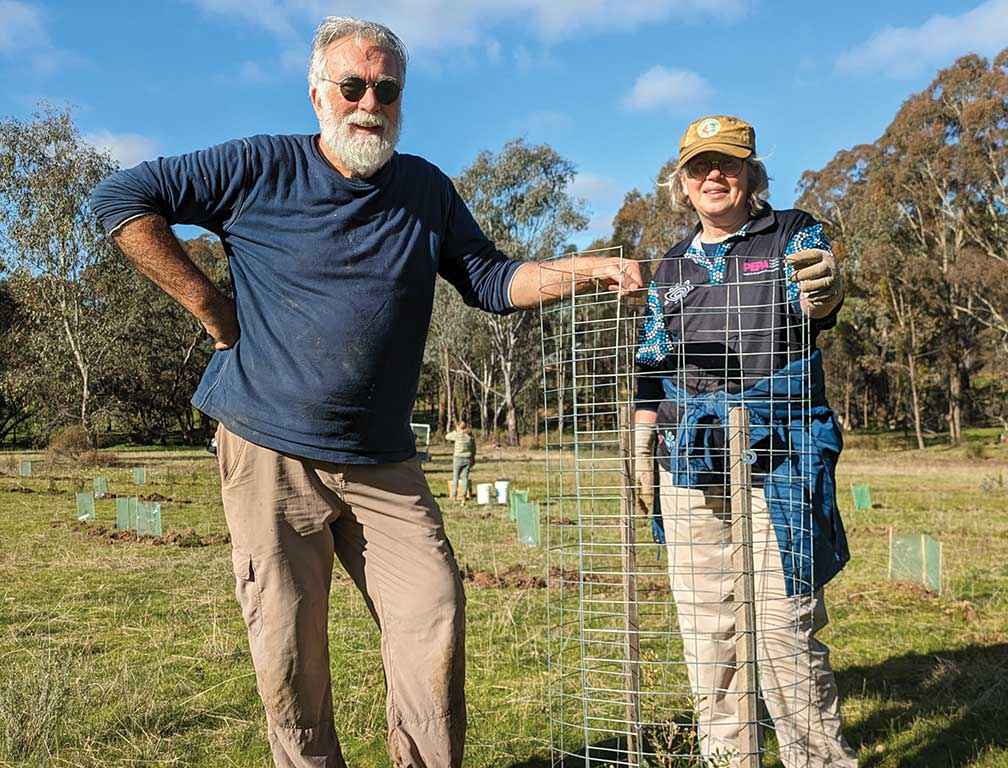Victorian Landcare Magazine - , Issue 89

The North Harcourt-Sedgwick Landcare Group (NHSLG) was among the first 20 Landcare groups established in Victoria, forming in 1988. The group covers approximately 12,500 hectares of Central Victoria on the lands of the Dja Dja Wurrung people. The group acknowledges the Dja Dja Wurrung and their ongoing connection, knowledge and protection of Djandak (Country).
In 2021 the group was successful in obtaining a Community Volunteer Action Grant from the Victorian Government to revegetate pockets of rare silver banksia (Banksia marginata) across the region.
Known as wurrak by the Dja Dja Wurrung, silver banksia is an important small tree. The flowers are soaked in water to make a sweet drink, and the dry cones were useful for carrying fire.
In the 1800s silver banksias (also called honeysuckle by early settlers) were plentiful in the region with old maps showing large stands of banksias around Mount Alexander.
Known as wurrak by the Dja Dja Wurrung, silver banksia is an important small tree. The flowers are soaked in water to make a sweet drink, and the dry cones were useful for carrying fire.

Above: The last surviving ancient silver banksia (Banksia marginata) on Mount Alexander.
In his 1858 book, Land, Labour, and Gold, William Howitt described the Victorian countryside on his travels from Melbourne to the goldfields. Nearing the Mount Macedon area he was taken by the variety of vegetation: “…through a wood of Banksia tree, the noises of vast numbers of parrots, paroquets, and wattle birds which were feasting on the honey of the Banksia flower.”
And later in the book: “As we advanced … nearly all the trees were shiacks (she-oaks) – not the eternal gum-trees and these interspersed with banksias, now in fresh foliage, and new pale yellow cones or rather bottle brushes with a sprinkling of gums and wattles gave… a variety of foliage and hue.”
Silver banksia were considered untidy and of little value by the early settlers. They were cleared and burnt leaving eucalypts to dominate the landscape. Along with the decrease in biodiversity of smaller trees such as banksias and she-oaks, many nectar feeding birds also disappeared. The few banksias that remained were weakened through interbreeding and seedlings were often eaten by sheep.
NHSLG plans to establish 1500 new silver banksias over the next five years. The project aims to strengthen biodiversity in the region which will in turn increase the diversity and numbers of wildlife. Silver banksia are important to many nectar eating birds such as New Holland honeyeaters and rainbow lorikeets. Pygmy possums, sugar gliders and a range of insects also utilise the nectar and native bees are attracted to the pollen. The insects attract the smaller insect eating birds. Yellow tail black cockatoos tear the banksia cones apart and eat the seeds.
Silver banksia are important to many nectar eating birds such as New Holland honeyeaters and rainbow lorikeets.
The project got underway in 2022 with 396 silver banksias planted by 17 local landholders. In the winter of 2023, a further 300 silver banksias were planted by 23 landholders. The grant funded the plants, guards, stakes, fertiliser and provenance identifying rings, which were then supplied to participating landholders at no cost.
Provenance of seed collection to create genetically hardy pockets of revegetation is important for the success of the project. Using seeds from different areas may give the plants a head start to withstand the effects of climate change.
The project has used seeds from seven different provenances, including areas around Dimboola, Kyneton, Tooborac and Kangaroo Island. Each new tree is labelled with a ring on the tree guard identifying its seed provenance.
Participating landholders have agreed to monitor the progress of the banksias and water the seedlings, and maintain the tree guards for the first two years. They are also recording data on survival rates and growth which can be used to further refine planting techniques to help the reintroduction of the species. As the new trees become established patterns may emerge regarding the different provenance of species and whether some grow better in our region.

Above: John McMahon and Su Crail with a silver banksia planted on their property in 2022.
The project continued in 2024 with some new landholders participating and infill of plantings at existing sites. Landholders have learnt the importance of keeping stock, kangaroos and rabbits away from the young plants as they are at risk of being eaten or trampled.
Working together to help restore the landscape and increase biodiversity has helped to create a sense of community in the region. Eliza Alford, President of NHSLG, is excited to be involved in this hands-on citizen science project.
“Learning about what the landscape used to be like and having the chance to help a species survive in our area feels like important work” Eliza said.
Sandy McLennan is a committee member of North Harcourt-Sedgwick Landcare Group. For more information email nhselandcare@gmail.com
* This article has been updated with the correct name for the silver banksia, known as wurrak by the Dja Dja Wurrung. Leanganook is the Dja Dja Wurrung name for Mount Alexander. Print copies of the magazine will have the original text.